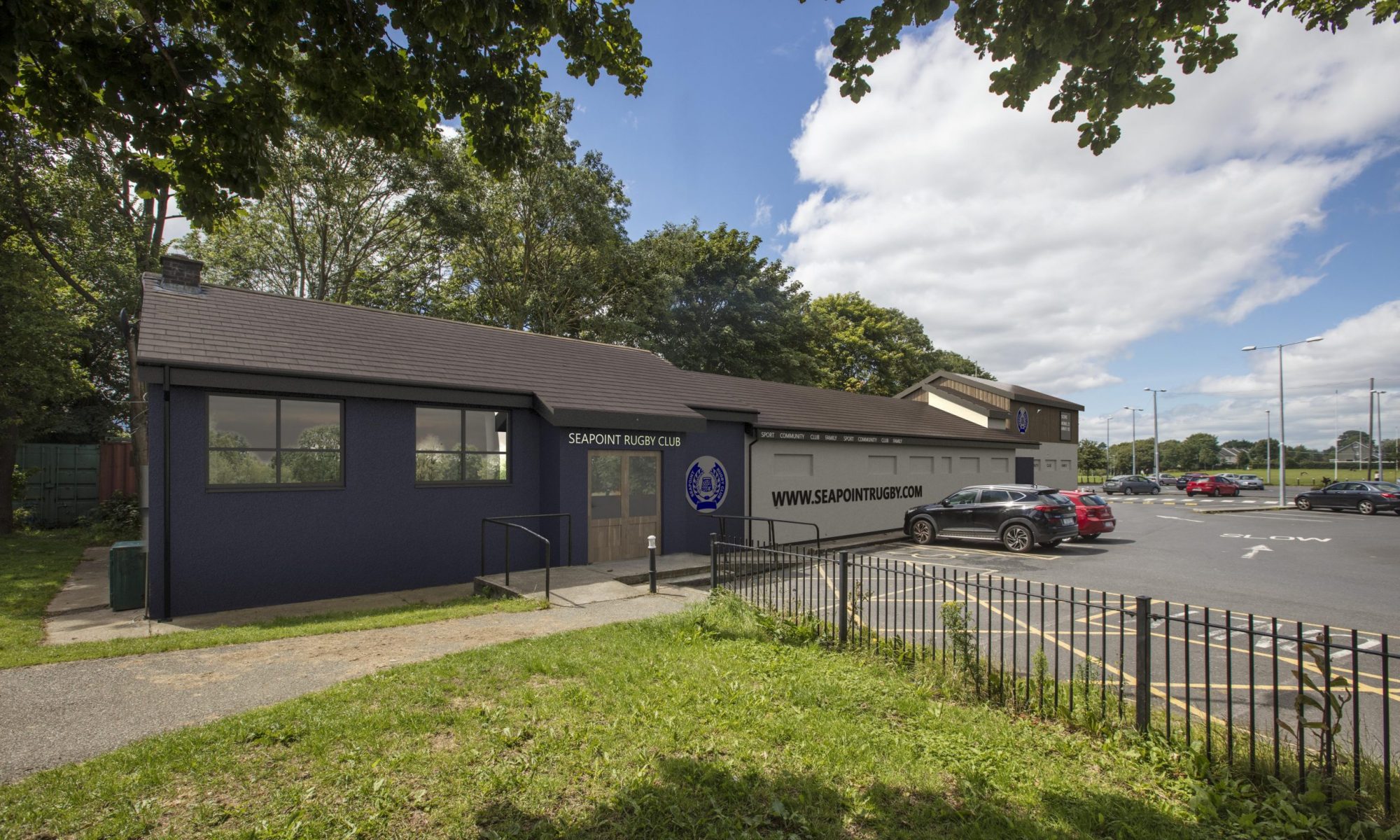In the early 1930s a group of young teenagers, boys and girls, from the Blackrock and Monkstown areas, congregated regularly each year at Seapoint for swimming and social activity. One day, as school leaving age approached, a discussion started on rugby and someone suggested the formation of a rugby club. The idea was enthusiastically received and, because of the association with the place, it was decided to call the club Seapoint. As far as memory serves, the names of those present at what has now proved quite an historic occasion were Paul Johnston, Paddy Lyons, James O’Reilly, Gerry Higgins, Vincent Moore and Sean Allan.
Gerry Higgins (who lived in a house in its own grounds, beside Eddie O’Reilly, in Newtownpark Avenue) undertook to ask Eddie’s mother who owned the house, and a field opposite it for permission to use the field. Paul Johnston said he would ask Tom and Jim Macken, whose father was a well-known building contractor, if they would supply posts and Sean Allan owned a rugby ball. As Mrs. O’Reilly and the Mackens (who promptly joined with Eddie O’Reilly) agreed, Seapoint was in business. Membership was built up from many of the others who frequented Seapoint and from their friends.
For the first year Seapoint was not affiliated to the Leinster Branch and scratch matches were played against teams, mainly from the Dun Laoghaire area, recruited by Cyril McElree. Seapoint was a motley team, that first year, playing in Joseph’s coat of many colours — all the old school jerseys.
At the end of that first season, the Dun Laoghaire team threw in its lot with Seapoint, the re-invigorated club affiliated to the Leinster Branch and it was decided to make the club jersey an all-white one. Some of the prominent Dun Laoghaire members who joined were Cyril McElree, Joe Brennan, Jack Dillon, Jack Curran, Jack Comerford, Brendan Hanrahan and Dick Crowley. Some of the early members, apart from those already mentioned were Tommy Hughes, Peter Costello, Brian O’Shea, Billy McKiernan, Seamus O’Sullivan, Charlie Willoughby, George Murphy, Roy Clegg, Pat Kinsella, the late Gerry Whelehan and the late Aidan O’Neill. The field at Newtownpark Avenue became unavailable and the club’s nomadic wanderings started. A move to Monaloe, Cabinteely (now the site of Dunnes Stores) took place where the dressing room was the local Foresters Hall, in the village.
After a comparatively short time in Monaloe, Seapoint’s next move was to a field beside Dean’s Grange Cemetary but at the outbreak of war this was requisitioned and turned into vegetable plots (nowadays houses). This meant a return to Newtownpark Avenue, to a field owned by the late Senator E. A. Maguire. After some years here, the club had to move again, a short distance away but still in Newtownpark Avenue,-to a field owned by the late George Acres. Old members will remember George and the pub in Newtownpark where Seapoint and opposition gathered after matches and where committee meetings were held for some years. The owner of the pub, the late Pat Kelly and his barmen were well known characters and all pints were served direct from the ‘wood’ — probably the best pub in Dublin where pumps were unknown.
This field was eventually sold for housing and Seapoint resumed their wanderings — this time to Stradbook. Once again this field was sold — for housing — and the club was fortunate, after much searching, to find another temporary home on Rochestown Avenue. Finally, and for the past number of years, Seapoint’s semi-permanent home has been in Sallynoggin (for which the club’s thanks is due to Dun Laoghaire Corporation and particularly to Councillor Willoughby, a founder member and Vice-President, and for his strong support in the club’s obtaining its new field).
Seapoint has had many ups and downs in its 44 years existence — from winning the Junior League, some twenty-five years ago, to almost having to close but a few determined people bridged that danger period. Its longevity and past achievements have far exceeded the wildest hopes of its original founders. Its achievements, in the future can, hopefully be summed up in the words “The World (Rugby) is our Oyster”.
In all this potted history, our original feminine support should not be forgotten — those who looked after teas and organised the original fund raising such as Whist Drives, held in Gerry Higgins house, in that first year, and subsequently dances— Seapoint’s first event being held in the Town Hall, Blackrock.
Some of those who supported us and helped Seapoint in these ventures and in the first dress dances in the now defunct Salthill Hotel, in Monkstown, in raffles and other fund raising efforts included Una and Florrie Carroll, Nell Casey, Nuala and Deirdre Cowley, Patsy Fleming and June Greene.
—Sean F. Allan
